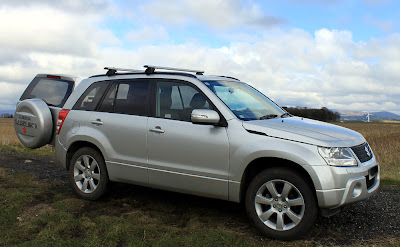This is a short post, mainly because there's not much to include by way of news from my quick visits to the Knott End and then Pilling patches before babysitting duties took precedence.
I started off at Knott End where although the tide was well out and three hours to go, there were birds to see at the far-off but approaching tideline: 2000+ Oystercatchers, 55 Bar-tailed Godwits, 18 Sanderling, 22 Turnstone, 45 Redshank, 190 Lapwing, 4000 Knot and 5 Eider.
Redshank
Judging the height and bore of tide here on the Wyre Estuary is a bit tricky, even for experienced sailors. From today’s local Blackpool Gazette:
“Seventeen people were stranded on the Fleetwood to Knott End vessel for more than three hours on Saturday when it hit a sandbank. The Wyre Rose got into difficulty at 1.45pm during a journey to Knott End and was unable to move until the tide came in at 5pm.
Knott End coastguard was called out to the scene to ensure the people on board, including three crew, were safe and well – and to determine any damage to the ferry. The skipper of the Wyre Rose, said high pressure weather patterns had affected the tide. He said: “The tide would normally have been over three metres but it was less than two metres. I even left Fleetwood early before it got any lower but we still got stuck.”
However, the skipper said he kept up the spirits of the passengers by serving them tea and coffee, Quality Street chocolates and having a sing-a-long to songs on Smooth FM radio. He said: “The passengers understood and some of them said it would give them something to tell their friends and relatives about.”
Wyre Estuary, Knott End
Despite outward appearances life is never dull at Knott End or Pilling
Stopping at Wheel Lane/Fluke Hall junction I checked over the flooded stubble hoping to see a Curlew Sandpiper for my December list but none showed. There were the usual Black-tailed Godwits only 30 today, a solitary Whooper Swan, 1 Snipe, 22 Redshank, 1 Oystercatcher and 4 Stock Dove. From a distance and in certain landscapes a Stock Dove can look surprisingly blue always standing out from any accompanying grey Woodpigeons, although the two species don’t always mix company. Thirty plus Woodpigeons was a slight increase on recent counts.
Stock Dove
The pools and maize crop produced 18 Wigeon, 14 Teal and 18 Shelduck, all suitably wild and keen to flee from my approach. I have discounted the 150+ reluctant-to-fly, obese and overfed Mallards whose date with destiny will arrive soon via the local sportsmen. Also 2 Reed Bunting, 3 Meadow Pipit, 40+ Linnets and 14 Skylark.
Along the shore I counted a minimum of 12 Little Egrets, keeping an eye out for any stray Great White Egrets, a species I missed by minutes at Conder Green on Sunday.
That Kingfisher looks like it was watching the Great White Egret sailing effortlessly above as I stuck to the task in hand, eye glued to the viewfinder hoping the sun might come out. That Kingfisher is a little like me, never trying anywhere different, hitting the same old spots, hoping something might turn up but it rarely does.
Kingfisher
Kingfisher
Well you never know, maybe one day?
Linking today to Stewart's World Bird Wednesday Gallery , Anni's Blog and Eileen's Saturday Critters .
Linking today to Stewart's World Bird Wednesday Gallery , Anni's Blog and Eileen's Saturday Critters .














































































